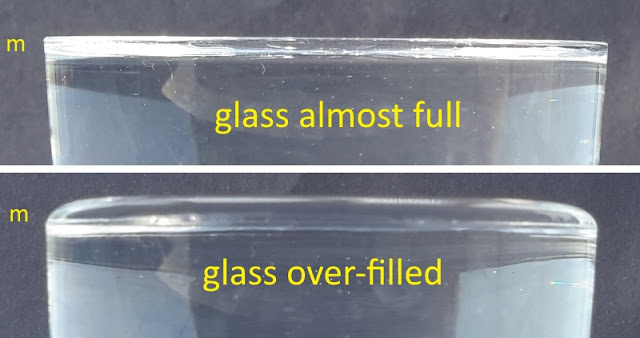“Surface tension” is how physicists describe the way a set of atoms or molecules attract each other. Because their particles are all pulling together, some complicated mathematics shows that when the material is liquid, the pulling forces make the material take a shape with the smallest surface areas, and that shape is a sphere.
If you want to make the biggest paddock with the smallest
fence, you need a circular paddock. If you need to split a farm into many
paddocks, there are better answers, but there is a legend that Queen Dido of
Carthage knew about circles being good, almost 3000 years back.
After her brother
Pygmalion killed her husband, she fled to the land of King Hiarbas, and asked
him for as much land as could be enclosed by a single ox hide. Hiarbas fell for
her apparently modest request, but rather than laying the ox hide on the
ground, she cut it into thin strips, tied them end to end, and then laid the
long strip out in a circle. This gave her an area large enough to found a small
country on.
It took
mathematicians until 1879 to prove what the writer of Queen Dido’s legend knew
by instinct or experience. That is, that circles enclose the biggest area for a
given perimeter, just as spheres enclose the biggest volume for a given surface
area.
Bubbles, shot and
rain drops go naturally to spherical, and all because of surface tension. Where
the water ends and the air begins, the attractive forces are to the sides and
down into the drop. There is no force pulling outwards, and this makes the
surface of the water act like a skin.
Some spiders and
also insects called water striders rely on surface tension to stay ‘walking’ on
water, like the paperclip. On the other hand, animals that are below the water
have trouble reaching through to the air above the water.
On the left, mosquito wrigglers, from an engraving in C. V. Boys’ book, on the right, some of my pets.
Mosquito larvae, usually called wrigglers, get around this
challenge by having a breathing tube or siphon that is hydrophobic, meaning it
repels water, so it pops through to the air. If it is threatened, the wriggler
breaks free of the surface tension with a fast wriggle, hence its name.
Now just a note about bubbles and
compression: the bubble’s skin is held outwards by the air pushing from inside,
but at the same time, the skin pulls in, so the air pressure inside is slightly
greater than it is outside. Measuring that pressure is a challenge: play with
it!
The
meniscus
You met the meniscus effect, though not by name, if you made
the kitchen compass. Surface tension also causes the shape of the
surface of water in a glass, but you have to work out the rest for yourself,
given that the surface is called a meniscus, it has to do with how the water
wets the glass, and the meniscus behaves oddly when you add a drop of
detergent.
Remember the title
of this blog, and play with it!
To search this blog, use this link and then use the search box
Another way: use the index!








No comments:
Post a Comment